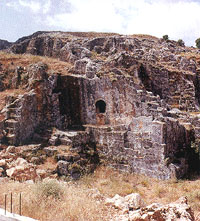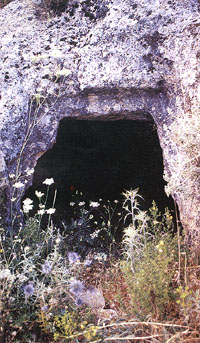|
An
Ancient Capital in the Beqaa
Travelers in Lebanon often notice curious flat-topped hills or
tells scattered around the country. These are artificial
mounds that slowly grew up over thousands of years as
different peoples constructed their settlements in the same
place.
Until 20 years ago such a tell existed just
north of Kamid el-Loz village in the southeastern Beqaa. One
of the largest and highest tells in the Beqaa, it was
excavated and studied by German archaeologists between the
mid-1950s and the early 1980s.
The tell at Kamid al-Loz turned out to be
of great importance, because buried at this one site were
occupation levels that began 7,000 years ago with
Neolithic or Stone Age people and continued through the
Persian Period in the 4th century BC.
Unfortunately this archaeological work was
interrupted during the war in Lebanon and later the site was
completely ruined by treasure hunters. Nonetheless,
archeologists found and recorded many spectacular buildings
which are very important to the history of the region.
Numerous urban structures such as defense systems, temples,
palaces, private dwellings, workshops and cemeteries were
uncovered. Archaeologists also found everyday objects such as
pottery, as well as jewelry and other luxury items.
Probably the most important finds were
documents written on clay tablets. This writing helped
identify the tell of Kamid as the location of "Kumidi",
a city named in the Amarna letters written in the 14th century
B.C. Kumidi was apparently an important city and the capital
of Egyptian colony that has settled in the area at least 3,400
years ago.
By the time of the Persian period in the
4th century BC, the site of Kumidi seems to have become less
desirable. And although historians are not sure why, the
people living there decided to move a little further south to
the place where the modern village now stands. So it is
likely that today the village of Kamid el-Loz lies on top of
settlements built in the Persian, Hellenistic and Roman
periods. South of the village we find a necropolis or burial
place that also dates to this era. |
|



|





